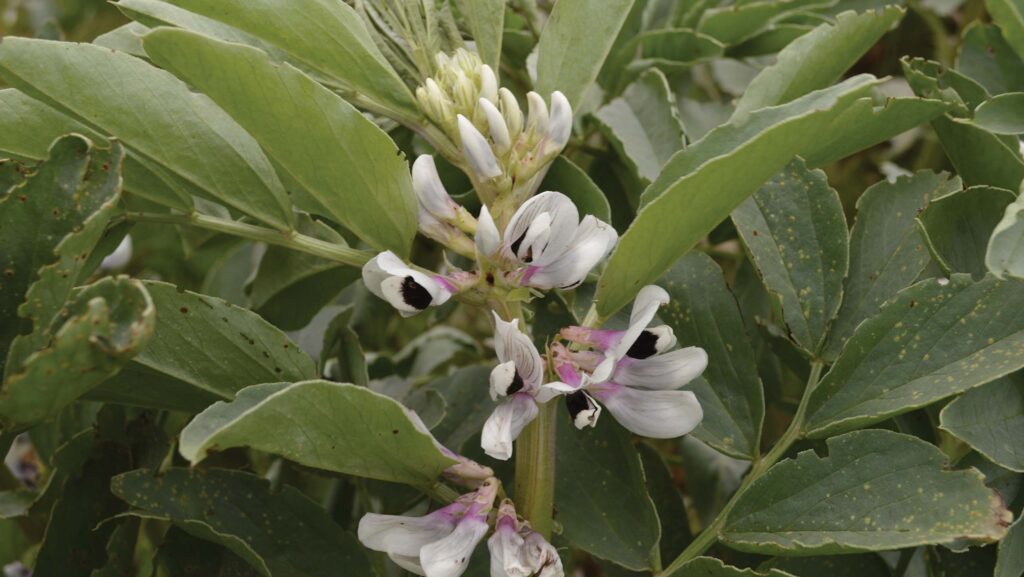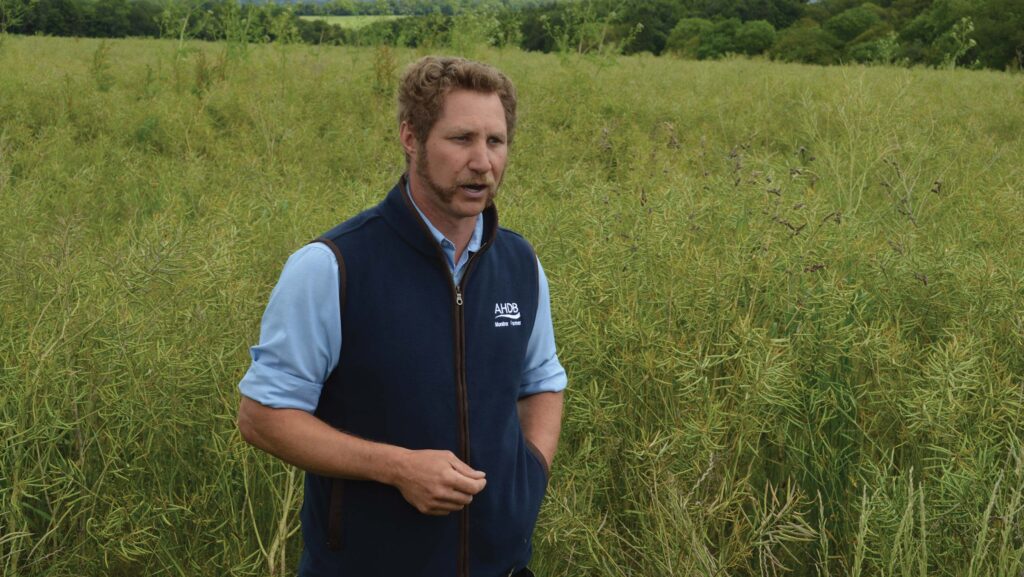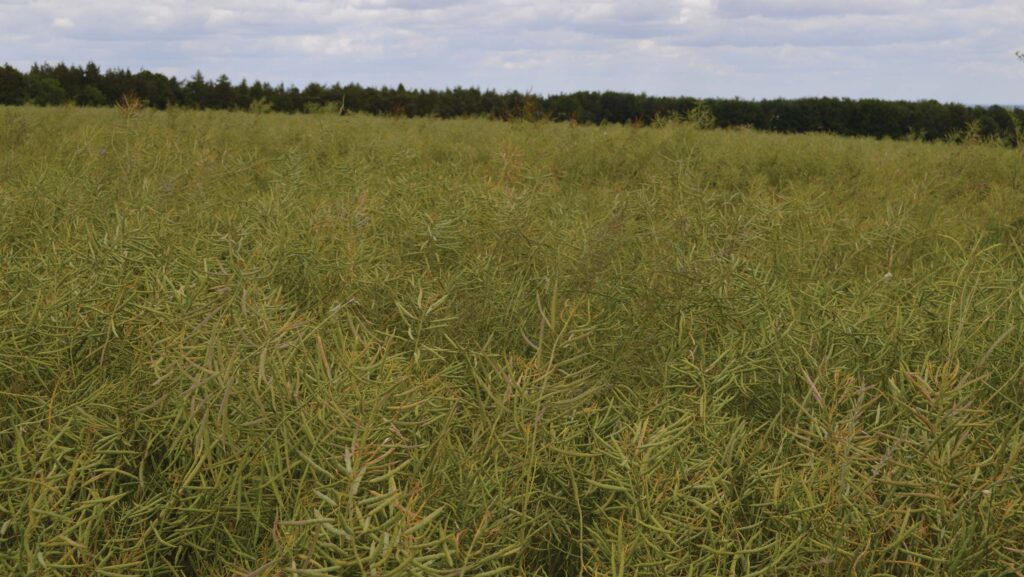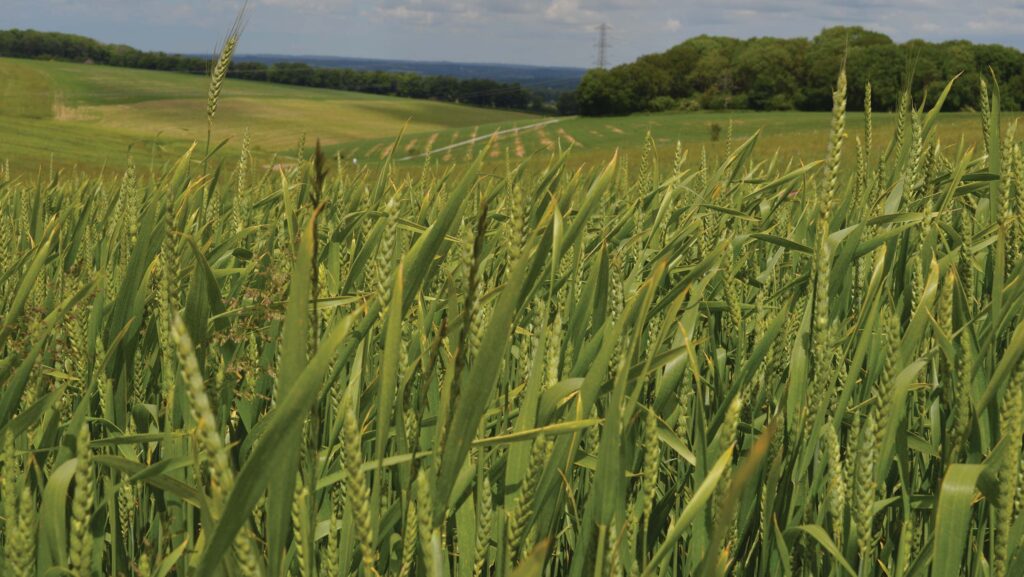Organic farm takes a break to build up soil fertility
 Beans are used widely across the farm, usually in a mix with a cereal © David Jones
Beans are used widely across the farm, usually in a mix with a cereal © David Jones Hampshire organic grower Tim May is putting three-quarters of his arable land into new environmental schemes to boost soil fertility and improve his busy work-life balance.
Tim is allocating just over 300ha of cropped land to herbal leys and legume fallows, letting him fine-tune his remaining organic arable land to get his cropping and rotations spot on.
The land is going into new three-year Sustainable Farming Incentive (SFI) schemes, to give him quarterly cash payments, cut his inputs to virtually zero and allow him to spend more time with his young family.
See also: How to maximise SFI herbal leys in arable rotations
“The three-year SFI will give us flexibility and a once-in-a-lifetime chance to build soil fertility, improve my lifestyle and focus on getting things right on the smaller area of arable organic cropping,” he says.

Tim May © David Jones
Tim has gone for a combination of herbal leys (CSAM3), worth £382/ha a year, and legume fallow (CNUM3), worth more at £593/ha a year. While the herbal leys can be grazed under SFI rules, the legume fallow can not.
The building up of soil fertility over the three years will put the farm in good stead for when the scheme is finished and the full arable area is again cropped and harvested, he says.
SFI actions planned
CSAM3: Herbal leys, worth £382/ha a year
This is aimed at creating a varied root structure to improve and maintain a soil’s structure, carbon, biology and fertility.
The herbal ley can be on the same land for each of the three years, or rotated each year. This area can be grazed.
CNUM3: Legume fallow, worth £593/ha a year
This is focused on managing nutrient efficiency and improving soil health, giving food for farmland wildlife, and supporting an integrated pest management approach and reducing grassweeds.
This area can not be grazed.
The switch over to SFI is affordable for the farm as the herbal leys can establish themselves.
There is a big reservoir of seed already in the ground, since his arable cropping follows four years of herbal leys to feed a 480-strong dairy herd.
On Tim’s 1,000ha Kingsclere Estates, four years of grazing herbal leys are followed by four years of arable cropping in his organic rotation.
The SFI options will fill three of the four years of arable rotation on the farm between Basingstoke and Newbury.
Tim first changed to a more sustainable farming system in 2013 after undertaking a Nuffield scholarship looking at land values and focusing on putting value into farmland.
He had observed that his own yields had plateaued while inputs continually rose on his light chalky loamy Hampshire downland soils.
The farm had already been using minimum tillage and direct drilling since 1996, but then had to turn away from these techniques and return to the plough to ensure good weed control in an organic system.

© David Jones
Organic conversion
Grassland was introduced to improve soil fertility, and Tim soon realised that to make the grassland really pay he needed to transition to organic production.
This started in 2017 and was completed by 2022, and allowed him to add value and move away from being a producer of commodities.
“We are still commodity producers, but it’s my wish to stop this in the future,” he says.
Wheat and oats yields have more than halved with the switch to organic production, but variable input costs have shrunk to just seed, and have given him an added advantage for cashflows while earning him organic premiums.
His soil organic matter levels have risen from 3.8-4.2% to an impressive 8.7-9.2%.
The organic move also brought an immediate improvement to Tim’s work-life balance as previous busy spring and early summer months had a reduced workload. He also dropped most of his previous contract farming work.
“Before we changed, we farmed 3,500 acres (1,400ha) of cereals and from April to October in the nice weather I was sitting on a tractor, while my friends had barbecues and enjoyed family life,” he says.
After first experimenting with sheep and beef cattle on his grassland, he plumped for dairy cattle as the best way to improve his soil fertility, and so set up a share farming agreement with milking enthusiast Oliver Chedgey in 2017.
This saw dairy cows return to the farm for the first time since 2002.
Herbal leys
Oliver now milks 480 New Zealand Friesian-Jersey crosses and runs youngstock over 440ha of herbal ley grassland, with cows milked through a roaming milking parlour once a day, with cattle outside all year.
The spring-calving herd means no outside milking in the colder winter months, while yields in the organic system are understandably low at just over 3,500 litres a cow a year.
However, the milk gains a price premium on an Arla organic contract, while there are virtually no housing or slurry storage and spreading costs.
Tim says this four-year herbal ley for the dairy cows is the key to fertility building on his light soils, and the long length of the ley helps give good weed control for the following arable crops.
He admits that while the move to organic grassland has been relatively straightforward, arable crop production has needed more thinking through, with a return to ploughing for weed control, a more diverse cropping system and tricky harvest times.
He is using a steerage hoe and integrated drill to sow crops and then weed them with the same machine, and has turned to a swather to help harvest crops that are often green with weeds.

© David Jones
Four years cropping
His four years of arable cropping starts with a spring-sown crop to allow overwintered grazing by the dairy herd, and this is often spring wheat or oats mixed with beans.
This is followed in the second and third years by crops of winter wheat or oats, again with beans. In the fourth year there is a spring barley crop undersown with a herbal ley to return to four years of grassland.
Milling wheat and milling oat yields have dropped to 3.3t/ha in the organic system from 7.5t/ha previously, although there is often an extra 0.5t/ha of beans in the mixed harvest, as well as healthy milling wheat and oat organic premiums of about £100/t.
“The yields are halved but the costs are much lower and premiums high,” says Tim.
He is confident that he can improve yields when focusing on a smaller arable area for the next three years, as in on-farm trials spring organic oat yields have been up to 4.9t/ha, and a first-time block of organic oilseed rape managed 3.3t/ha.
“We see the potential there in the arable side, but it’s unblocking that potential, and the trials have showed us what yields are possible,” he says.
This report is from the first AHDB Monitor Farm meeting at Kingsclere Estates earlier this summer. The Hampshire estate started a three-year stint as a Monitor Farm host in May this year, and so has become the first organic farm to join the programme.

